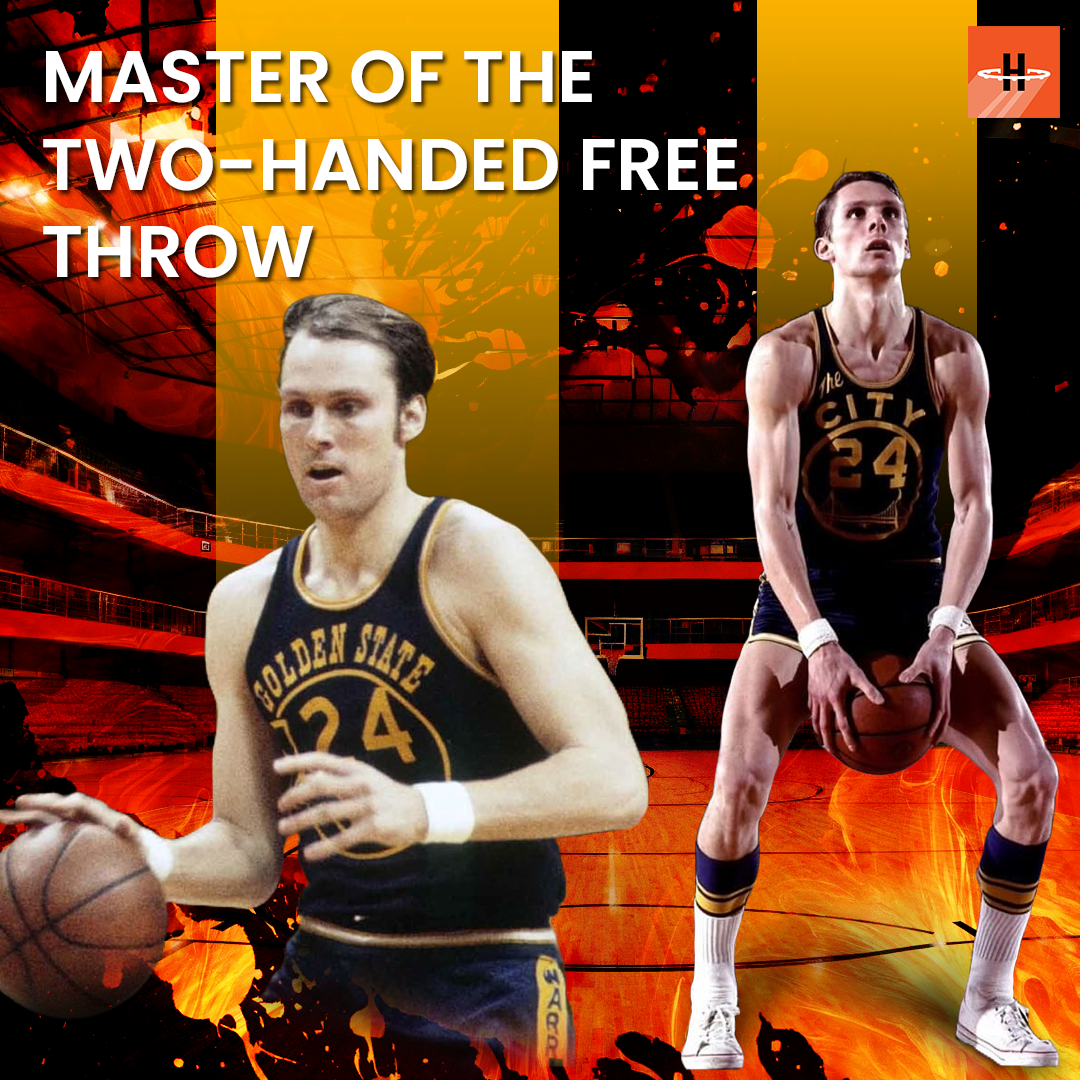Rick Barry and the Underhand Free Throw: A Masterclass in Unconventional Excellence

In the world of basketball, where style and flair often take center stage, few players have dared to break convention as boldly as Rick Barry. A Hall of Famer and one of the greatest shooters in NBA history, Barry was known for his exceptional scoring ability, fearless competitiveness, and most notably, his unconventional yet highly effective underhand free throw technique, often referred to as the “granny shot.”
While many players today focus on high-arcing one-handed free throws, Barry mastered a method that, despite its unconventional appearance, proved to be one of the most efficient techniques in basketball history. His commitment to this technique resulted in one of the highest free throw percentages in NBA history, proving that sometimes, success lies in refining and perfecting the fundamentals rather than conforming to mainstream norms.
The Genesis of the “Granny Shot”
Barry didn’t always shoot underhanded. In fact, he initially used the traditional overhand technique, like most players. However, his father, Bruce Barry, a former basketball player and coach, introduced him to the underhand method, explaining its benefits in terms of consistency and control. At first, Rick Barry was reluctant—after all, no professional player was using the technique at the time. But with an open mind and an understanding of its effectiveness, he transitioned to the unorthodox approach.
The results were immediate and remarkable. Barry quickly realized that the underhand technique gave him a softer touch, reduced variability in his shot, and increased his accuracy. What started as an experiment soon became a staple of his game, turning him into one of the most reliable free-throw shooters of all time.
The Science Behind the Technique
At first glance, the underhand free throw appears outdated or even humorous, leading many players to dismiss it outright. However, science and physics support its effectiveness.
- Arc and Softness: The underhand shot provides a higher arc than the traditional free throw. A higher arc increases the chances of the ball going in, as it expands the available target area of the hoop.
- Spin and Control: When shooting underhand, the ball has a natural backspin, which allows for a softer bounce on the rim. This increases the likelihood of getting favorable rolls on near-misses.
- Consistency: Unlike the overhand shot, which requires precise wrist control and can be affected by fatigue, the underhand method uses a simple, repeatable motion that reduces variation and promotes muscle memory.
Despite these advantages, very few players in NBA history have adopted the technique, largely due to its unconventional appearance and the stigma associated with it. Players often fear ridicule from peers and fans, prioritizing aesthetics over efficiency.
Rick Barry’s Unmatched Free Throw Success
Throughout his career, Barry shot above 90% from the free-throw line—a number that only a handful of players in history have matched. He finished his NBA career with a free-throw percentage of 89.3%, making him one of the most accurate free-throw shooters in league history. During his best seasons, he was virtually automatic from the line, routinely leading the league in free throw percentage.
One of the most striking aspects of Barry’s success is that, despite his dominance at the free-throw line, very few players have been willing to follow in his footsteps. Shaquille O’Neal, one of the greatest centers of all time, famously struggled with free throws, making only 52.7% over his career. Barry openly suggested that O’Neal try the underhand method, but Shaq refused, citing concerns over looking foolish.
This highlights a key takeaway from Barry’s story—sometimes, pride and perception hold players back more than the actual effectiveness of a technique.
Breaking the Stigma: Why More Players Should Consider the Underhand Free Throw
Despite overwhelming evidence supporting the efficiency of Barry’s method, the technique remains largely abandoned in modern basketball. Many players avoid it due to concerns about image and perception, fearing that they will look “silly” or “old-fashioned.” But Barry’s success proves that breaking from tradition can lead to greatness.
Consider the implications for players struggling at the free-throw line. Many big men in the NBA, such as Dwight Howard and Andre Drummond, have notoriously low free-throw percentages, often shooting below 50%. If they were willing to embrace Barry’s method, they could dramatically improve their performance at the line, ultimately helping their teams win more games.
Moreover, Barry’s success demonstrates a broader lesson in sports and life: true innovation isn’t always about flashy reinvention—it’s about refining and mastering techniques that work, even if they seem unconventional. His legacy serves as an inspiration for players willing to think outside the box, prioritize results over aesthetics, and focus on efficiency over conformity.
Rick Barry’s Lasting Legacy
Rick Barry’s impact on basketball extends far beyond his free throw shooting. He was a dynamic scorer, a tenacious competitor, and a pioneer in the game. His contributions helped shape the sport and inspire future generations of players.
Even today, Barry continues to advocate for the underhand free throw, offering coaching and advice to players willing to listen. While very few have taken up the challenge, his technique remains a shining example of the power of innovation in sports.
For young players, Barry’s story is a reminder that greatness often comes from embracing your own strengths rather than blindly following convention. Whether in basketball or life, breaking from tradition can lead to extraordinary success—just as it did for Rick Barry and his legendary underhand free throw.
#RickBarry #UnderhandedFreeThrow #GrannyShot #NBALegends #FreeThrows #BasketballSkills #NBAIcons #ShootingAccuracy #BasketballHistory #NBAGreats

